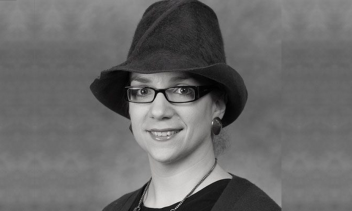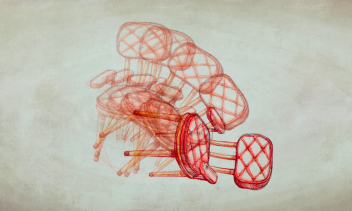I don’t envy parents. Raising kids is a difficult, often thankless task, even when things go smoothly: childhood is basically a constant state of change. The minute you get a handle on one behavior, your child is on to the next one with completely different milestones to meet. To add an extra layer, there’s your child’s emotional functioning: all children get worried sometimes, sad about things, act out occasionally, act shy, etc. So how are you supposed to know if what you’re seeing are the hallmarks of normative development, or a cause for concern?
By the numbers, there’s definitely what to be concerned about: 20% of children meet criteria for a mental illness diagnosis each year. One in three children will meet the criteria for an anxiety disorder by age 18. One in five people will struggle with depression in their lifetime. The rates of suicidal thoughts in teens climbed 40% in the years before the pandemic. And the incidence of death by suicide in teens has been steadily rising, making it the second leading cause of death in that age group. From where I sit as a child and adolescent psychologist, the picture is pretty grim—and the treatment numbers aren’t much better.
When I talk about the mental health crisis, it feels a bit like I’m in the children’s story of Chicken Little, who walks around trying to warn everyone that the sky is falling, while being completely ignored by the people around her.
While 80% of people dealing with anxiety will have contact with a treatment provider (mostly, a primary care doctor), only 30% of those people will have any contact with an appropriate treatment provider such as a therapist, psychologist, or psychiatrist. Even among those who access mental health care, only a fraction of those receiving treatment will receive evidence-based treatment for their condition (such as cognitive behavioral therapy for anxiety, for example) .
If I told parents that 30% of children would suffer from the lasting impact of strep, or the flu, everyone would be pushing treatments—there would be tents on street corners offering preventative information, antibiotics, testing. Yes, the American medical system is flawed, but we saw it mobilize in 2020 and 2021 in the midst of the COVID pandemic. It can do what needs to be done when a crisis strikes.
When I talk about the mental health crisis, it feels a bit like I’m in the children’s story of Chicken Little, who walks around trying to warn everyone that the sky is falling, while being completely ignored by the people around her.
If we care about children, which I have no doubt that we do, we need to take their mental health seriously. Practically, that means we need to educate ourselves on social and emotional milestones, and normalize seeking help for our children and families.
Recognizing When ‘Just a Mood’ Is Something More
When parents walk into my office, they’ll often tell one of two stories:
We saw the signs of this behavior early, but figured he would grow out of it. It’s five years later and we think we waited too long. Help us, please.
Or:
My kid doesn’t know how easy she has it. When I was her age, I had so much less, and I was fine. Here she is, struggling, probably because she hasn’t learned to deal with hard things like I have.
In both these perspectives, I see parents who don’t know enough about what mental health and wellness look like in children—and it’s to no fault of their own. But if we want to solve a problem, we first need to identify it.
We need to talk more about when behaviors become concerning, such as the difference between sadness and depression, or when anxiety needs treatment. We’re language-based creatures, and we often fall into the trap of believing that, because a child isn’t old enough to express themselves with words, they must not have the rich inner lives (and struggles) that adults do. That is patently untrue. Children don’t yet have the meta-cognitive abilities to talk about what is going on in their minds, but they can still suffer the consequences of an unhealthy relationship with their emotions.
But if we want to solve a problem, we first need to identify it.
Mental health is tricky because the borders between normal and pathological are fuzzy. Take anxiety, for example. Anxiety is a normal, adaptive response to threats that is good for us as humans. We look both ways before crossing the street because of a normal amount of anxiety about getting hit by cars, for example. We buy insurance because we worry about potentially terrible things that may happen, but probably won’t. At the same time, we can recognize that a teenager who avoids school and isolates themself in their room because of social worries has too much anxiety, that keeps them from doing the things teenagers need to do—socializing with friends, achieving more independence, and attending school. This warning system that is meant to keep us safe is causing problems in his life, not alleviating them.
I’ll get into some broad principles about detecting problems and seeking help below, but allow me to get very concrete for a bit. As a psychologist, these are behaviors that concern me and warrant immediate attention at any age:
- Sadness lasting more than two weeks
- A change in level of social interest, increased isolation
- A child discussing or actively hurting themselves
- Any talk of death or suicide
- Harmful, out-of-control behavior
- Big changes in eating habits
- Weight loss
- Sleep changes (too much or too little)
- Somatic concerns like headaches or stomachaches frequently
- Doing poorly in school/ changes in academic performance
- School avoidance
- Changes in attention or levels of concentration
If your child is exhibiting any of the signs on this list, talk to someone: Often, pediatricians are excellent first-line resources, and they may direct you to a mental health provider. If you aren’t familiar with the mental health system, this call might feel daunting. I encourage parents to consider coming in for a consultation the same way they might consult with a medical doctor on a physical health issue with their children: This is just what we need to do to keep our children safe.
Look for Impairment in Functioning
Difficulty with social and emotional functioning often does not start in adulthood. Developmental disorders like ADHD and Autism spectrum disorders begin in childhood. Anxiety also emerges young, followed by depression in adolescence. Though all children act out, disruptive behavior disorders can often be reliably diagnosed by age five. While all children act out sometimes, a child with a behavior disorder exhibits a pervasive pattern of misbehavior that impacts his or her functioning or the functioning of the people around them in a way that will be unlikely to outgrow without support or change.
One question I use in my practice is simple: Is this behavior negatively impacting my child’s ability to do what they need to do? Generally, with children, this includes going to school, completing their homework, and forming relationships.
Keep in mind that kids do not grow in a vacuum: If your child is doing all the things they need to do, but only with a herculean effort on the part of the adults around them, their functioning is impaired. Psychologists call the behaviors that parents do to prop up their kids “accommodations.” These are ways that parents enable their child’s anxiety, which actually worsens anxiety in the long term rather than alleviates it. These accommodations are often behaviors that parents might not realize that they’re doing at first so adults don’t realize how enmeshed they are in their child’s dysfunction until it’s well past a point that they can easily change their behavior.
Here are some examples of ways parents may provide unhealthy accommodations to their children:
- An anxious son demanding to be woken up only by dad, and only at 7:02, and only being served fresh waffles in order to attend school
- A daughter insists that you supply new bottles of hand soap daily, even though everyone else in your household goes through a bottle once a month, a request that parents comply with to avoid a massive meltdown
- Enmeshment in complicated bedtime routines that were not created by or agreed to by parents, but take over the household’s nighttime
- Parents who go out for a sorely needed date night only for their teenager to call repeatedly times for reassurance about things that they already know the answers to
- Mothers who need to act as calendar, alarm, and taskmaster for their children well past when it is developmentally appropriate to do so
- Fathers who are afraid that, if they don’t manage a child’s social calendar, their child will fail academically or socially
If something on this list sounds familiar, but you aren’t quite sure if what you’re seeing in a child impairs their functioning, the best thing you can do is ask others who might know better.
Learn What Child Development Looks Like
One more strategy to help parents understand child mental health and distinguish between problematic and normative development is to learn more about children in general. Specifically, when they’re supposed to do what.
Childhood milestones are funny things. When kids are young, they take all our focus: When should she smile? Walk? Speak her first words? Somewhere along the way, though, we stop talking about them. Those milestones seem like an easy metric to track and compare to peers, but as a child grows, the whole thing becomes a lot more complicated. Most skills develop within a range, so knowing the expected range is helpful while panicking that your child is a month behind but still within the normal range is not.
If parents know what is expected of the “average” child, they will know what to look for and when to be concerned about an issue. We don’t talk nearly enough about what to expect from your child emotionally, so there’s often a lag time between when a problem emerges and when parents recognize it as a problem. Nearly every parent I see in my office says some variation of, “He’s always been a shy kid, and didn’t talk to his teachers. I just didn’t realize it was a problem at first.”
The more parents know about what they should expect from kids, the more they can know what not to expect as well.
For children with anxiety, I view this “lack-of-milestones problem” as even bigger, because development and anxiety go hand in hand. If Hannah is anxious about talking to friends, she might sit in the corner and play by herself during free play, which prevents her from learning the reciprocal social skills that come from playing with other kids her age, which in turn exacerbates her anxiety. Or, if Josh worries about causing harm to others, he might avoid driving when he turns 17, which will make it that much harder for him to do other independence-based tasks later on because he can’t get anywhere that he can’t walk. His anxiety about driving keeps him from developing that milestone of independence that we expect from teens his age.
The more parents know about what they should expect from kids, the more they can know what not to expect as well.
Learning about what is normal emotionally and what isn’t can be tricky (another reason to talk to an expert). One quick (sometimes faulty) way you can figure out if your child is doing the things he or she should be socially and emotionally is to compare them to their peer group. It’s an opportunity to use social comparisons for good (for once!). Ask yourself: Is my child keeping up with the skills his or her friends are demonstrating?
Normalize Talking About Problems
Humans are social creatures. We compare ourselves to others, looking for similarities and differences. We need to do better at using our networks of friends and families as support. Specifically, we need to normalize talking about our own struggles with our children.
If we want to raise healthy, resilient children, we need to find ways to identify, talk about, and develop skills to manage when our children are struggling.
A while ago, I was at a friend’s house for Shabbat lunch, and all the families eating there had teenage girls. The girls weren’t present—which I think is a prerequisite to what follows—and we got to vent about how hard it is to parent a teenager: how they push your buttons, make it difficult for you to validate them, how you can trigger them at any moment, and you don’t know what will set them off. One dad commented, “Woah, I didn’t realize how much I needed to hear all this!”
Talking about our struggles with others can make us vulnerable. But it can also make us realize that we’re not alone, and give parents the strength we need to help our children when they need it most. If we want to raise healthy, resilient children, we need to find ways to identify, talk about, and develop skills to manage when our children are struggling.
Dr. Regine Galanti, founder of Long Island Behavioral Psychology, is a clinical psychologist specializing in anxiety, OCD, and behavior issues. With expertise in Cognitive Behavioral Therapy, she offers tailored solutions and concrete strategies for children, teens, and adults. Dr. Galanti’s published works include Parenting Anxious Kids, Anxiety Relief for Teens, and When Harley Has Anxiety. She has been featured in The New York Times and The Washington Post, and recognized for her insights. As president-elect of the Society for Clinical Child and Adolescent Psychology (SCCAP), and an Educational Consultant at Mount Sinai Hospital, Dr. Galanti continues to bring focus and attention to evidence-based treatment for child mental health care.








